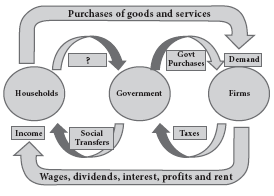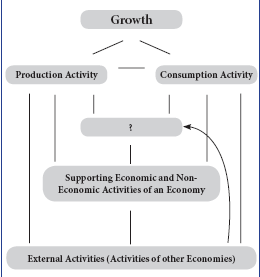- State Board
-
12th Standard
-

Biology
-

Computer Applications
-

Computer Science
-

Business Maths and Statistics
-

Commerce
-

Economics
-

Maths
-

Chemistry
-

Physics
-

Computer Technology
-

History
-

Accountancy
-

Tamil
-

Maths
-

Chemistry
-

Physics
-

Biology
-

Computer Science
-

Business Maths and Statistics
-

Economics
-

Commerce
-

Accountancy
-

History
-

Computer Applications
-

Computer Technology
-

English
12th Standard stateboard question papers & Study material
தமிழ் Subjects
English Subjects
-
-
11th Standard
-

Maths
-

Biology
-

உயிரியல் - தாவரவியல்
-

Economics
-

Physics
-

Chemistry
-

History
-

Business Maths and Statistics
-

Computer Science
-

Accountancy
-

Commerce
-

Computer Applications
-

Computer Technology
-

Tamil
-

Maths
-

Commerce
-

Economics
-

Biology
-

Business Maths and Statistics
-

Accountancy
-

Computer Science
-

Physics
-

Chemistry
-

Computer Applications
-

History
-

Computer Technology
-

Tamil
-

English
11th Standard stateboard question papers & Study material
தமிழ் Subjects
English Subjects
-
-
9th Standard
-

-

-

-

-

-

-

Maths
-

Science
-

Social Science
-

Maths
-

Science
-

Social Science
9th Standard stateboard question papers & Study material
தமிழ் Subjects
English Subjects
-
-
6th Standard
-

Maths
-

Science
-

Social Science
-

Maths
-

Science
-

Social Science
6th Standard stateboard question papers & Study material
தமிழ் Subjects
English Subjects
-
-
10th Standard
-

Maths
-

Science
-

Social Science
-

Tamil
-

Maths
-

Science
-

Social Science
-

English
-

English
10th Standard stateboard question papers & Study material
தமிழ் Subjects
English Subjects
-
-
7th Standard
-

Maths
-

Science
-

Maths
-

Science
-

Social Science
7th Standard stateboard question papers & Study material
தமிழ் Subjects
English Subjects
-
-
8th Standard
-

கணிதம் - old
-

Science
-

Social Science
-

கணிதம்
-

Maths
-

Science
-

Social Science
8th Standard stateboard question papers & Study material
தமிழ் Subjects
English Subjects
-
-
12th Standard
- CBSE Board
-
12th Standard CBSE
-

Biology
-

Physics
-

Chemistry
-

Maths
-

Accountancy
-

Introductory Micro and Macroeconomics
-

Business Studies
-

Economics
-

Computer Science
-

Geography
-

English
-

History
-

Indian Society
-

Physical Education
-

Sociology
-

Tamil
-

Bio Technology
-

Engineering Graphics
-

Entrepreneurship
-

Hindi Core
-

Hindi Elective
-

Home Science
-

Legal Studies
-

Political Science
-

Psychology
12th Standard CBSE Subject Question Paper & Study Material
-
-
11th Standard CBSE
-

Mathematics
-

Chemistry
-

Biology
-

Physics
-

Business Studies
-

Accountancy
-

Economics
-

Computer Science
-

Bio Technology
-

English
-

Enterprenership
-

Geography
-

Hindi
-

History
-

Home Science
-

Physical Education
-

Political Science
-

Psychology
-

Sociology
-

Applied Mathematics
11th Standard CBSE Subject Question Paper & Study Material
-
- 10th Standard CBSE
-
9th Standard CBSE
-

Mathematics
-

Social Science
-

Science
-

English
-

Hindi
9th Standard CBSE Subject Question Paper & Study Material
-
-
8th Standard CBSE
-

Science
-

Social Science
-

Mathematics
-

English
8th Standard CBSE Subject Question Paper & Study Material
-
-
7th Standard CBSE
-

Mathematics
-

Science
-

Social Science
-

English
7th Standard CBSE Subject Question Paper & Study Material
-
-
6th Standard CBSE
-

Mathematics
-

Science
-

Social Science
-

English
6th Standard CBSE Subject Question Paper & Study Material
-
-
12th Standard CBSE
- Free Online Test
- News
- Study Materials
-
Students
-

Stateboard Tamil Nadu
-

CBSE Board
-

Free Online Tests
-

Educational News
-

Scholarships
-

Entrance Exams India
-

Video Materials
Study Materials , News and Scholarships
-
-
Students

12th Standard English Medium Economics Subject Creative 1 Mark Questions with Solution Part - II updated Creative Questions Question Bank Software May-13 , 2022
QB365 provides detailed and simple solution for every Creative Questions in class 12 Economics Subject. It will helps to get more idea about question pattern in every Creative questions with solution.
latest Creative Questions12th Standard English Medium Economics Subject Creative 1 Mark Questions with Solution Part - II
12th Standard
-
Reg.No. :
Economics
Time :
01:00:00 Hrs
Total Marks :
25
-
Example for Mixed Economy ________.
(a)India
(b)France
(c)China
(d)Both 'a' and 'b'
-
Socialist Economy promote __________.
(a)Social welfare motive
(b)Collective welfare motive
(c)Profit motive
(d)Both 'a' and 'b'
-
The right to property exists largely in _______.
(a)Traditional society
(b)Capitalism
(c)Socialism
(d)Mixed economy
-
Identify the Father of Scientific Socialism.
(a)Adamsmith
(b)J.M. Keynes
(c)Karl Marx
(d)Marshall
-
Identify the economic system where only public ownership of production exists.
(a)Capitalistic economy
(b)Socialistic economy
(c)Globalistic economy
(d)Mixed economy
-
The growth and development of an economy and the factors determining them could be understood only through________
(a)macro analysis
(b)micro analysis
(c)positive analysis
(d)rational analysis
-
Who defined the following statement for an economy? “An economy is a cooperation of producers and workers to make goods and services that satisfy the wants of the consumers".
(a)A.J. Brown
(b)J.R. Hicks
(c)J.S. Mill
(d)J.M. Keynes
-
Identify which is not an example of capitalistic economy.
(a)The USA economy
(b)Germany economy
(c)Indian economy
(d)Australia economy
-
Which of the following system leads to leads to frequent violent economic fluctuations and crises?
(a)Free market system
(b)Restricted market system
(c)Black market system
(d)New market system
-
Find the missing flow from households to government in the diagram
 (a)
(a)Revenue
(b)Fees
(c)Taxes
(d)None of the above
-
Given the chart, find the missing activity of an economy.
 (a)
(a)Foreign Activity
(b)Excess Activity
(c)Exchange Activity
(d)Government Activity
-
Assertion: Each individual and organization produce only those goods which ensure high profit.
Reason: Profit is the driving force behind all economic activities in a capitalistic economy(a)Both A and R are true and R is the correct explanation of A.
(b)Both A and R are true but R is not the correct explanation of A
(c)A is true but R is false
(d)A is false but R is true
-
Assertion: National plans are drawn up by the Government and both private and public sectors abide.
Reason: The central planning authority prepares the economic plans.(a)Both A and R are true and R is the correct explanation of A
(b)Both A and R are true but R is not the correct explanation of A.
(c)A is true but R is false
(d)A is false but R is true.
-
Which of the following is a limitation of the simple circular flow model?
(a)Product markets are ignored
(b)Resource markets are ignored.
(c)The determination of product and resource prices is not explained.
(d)Households are included, but not businesses.
-
In the circular-flow diagram
(a)Firms are sellers in the resource market and the product market
(b)Households are sellers in the resource market
(c)Firms are buyers in the product market
(d)Spending on goods and services flow from firms to households
-
For an economy consisting of households and businesses only, which of the following is consistent with the circular flow of income and production?
(a)Households are producers of goods and services and consumers of resources
(b)Households are users of resources, and businesses are sources of saving
(c)Households are suppliers of resources and consumers of goods and services
(d)Businesses are users of taxes, and households are sources of taxes.
-
A country which has no economic relations with other countries in termed as
(a)Open economy
(b)Closed economy
(c)Planned economy
(d)Command economy
-
Nobel laureate Smimon Kuznets introduced the first concept of _________
(a)Percapita Income
(b)National Income
(c)Domestic Income
(d)Personal Income
-
GDP by expenditure at ________ price.
(a)Factor price
(b)Market price
(c)Real price
(d)All the above
-
Goods and services produced in a year to satisfy immediate wants is known as ________.
(a)Production
(b)Consumption
(c)Distribution
(d)Exchange
-
The difference between value of exports and imports of goods and services is known as
(a)X - M
(b)G + I
(c)X x M
(d)All the above
-
Output = Income = _________
(a)Price
(b)Expenditure
(c)Income
(d)None of these
-
Under social accounting method the economy is divided into _______ sectors.
(a)four
(b)two
(c)several
(d)three
-
GDP indicates productive capacity for an ______.
(a)economy
(b)employment
(c)income
(d)population
-
The value of net national product will be more than the value of net domestic product, if ________.
(a)imports exceed exports
(b)exports exceed imports
(c)exports equal imports
(d)none of the above
1 Marks
25 x 1 = 25






 12th Standard Economics Syllabus
12th Standard Economics Syllabus  12th Standard Economics Study Materials
12th Standard Economics Study Materials 12th Standard Economics MCQ Practise Tests
12th Standard Economics MCQ Practise Tests 

Reviews & Comments about 12th Standard English Medium Economics Subject Creative 1 Mark Questions with Solution Part - II updated Creative Questions
Write your Comment